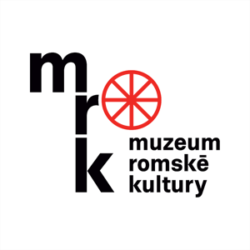Růžena Otáhalová
Růžena Otáhalová, née Krausová (1928, Dolní Cerekev, Pelhřimov district – year of death not known)
-
Testimony abstract
Růžena Otáhalová grew up in Jihlava, where her father was a professional musician and her mother worked in a factory making Christmas decorations. There were nine siblings. When their father died in 1939, their mother was left alone.
When Růžena Otáhalová was 14 years old, the Gestapo surrounded their house and took the whole family by cars to the train station and then by train to Brno to the city slaughterhouse. Her sister Marie with her son Erik, who were visiting them, were also arrested. They stayed in Brno for three days in a large shed where cattle had previously been kept. Everyone's hair was shaved off and after three days they were taken by train in cattle trucks via Ostrava to Auschwitz.
They arrived at the camp in the dark, but the arrival ramp was illuminated with bright lights; they were dragged out of the wagons and dogs were let loose on them. They spent the first night in a large shed where they were tattooed [with registration numbers]. Otáhalová recalled that they used one needle for all of them, which they changed only when it broke. The tattooing left them with sores.
They were then divided into blocks, and Růžena Otáhalová and her family were assigned to block 13, where there were only women; she estimated that there were 300 of them. The block was approximately 50 metres long, with three tiers of beds on either side, a gate at each end and a stove in the middle. There was heating on two sides connected by a brick tunnel on which it was possible to sit. The latrines were only accessible at certain times, and at night female prisoners could only relieve themselves in the barrel at the back entrance. The hygienic conditions were appalling, they had only old blankets full of bedbugs to cover themselves, and they were plagued by lice.
The block was on the edge of the camp near the gas chambers and crematorium. Through a window near the ceiling, which could be reached by climbing a pillar, they saw Jews being brought in – the able-bodied ones from 16 to 25 were left behind, the others were gassed in the showers and then incinerated in the crematorium. Otáhalová recalled standing in front of the gas chamber three times, but each time she was lucky to be assessed as still able to work.
Růžena Otáhalová's mother fell ill with typhus shortly after arriving in the camp, together with her sister Irena. She never saw her mother again; her sister just gave her a sign through a window high in the wall of the infirmary that her mother was no longer alive. Her sister Irena recovered, but her sister Marie and her son Erik, her grandmother and others died. Her sister Anna gave birth in the camp, but the newborn baby was thrown alive into a sewer.
In 1944, Růžena Otáhalová was assigned to a transport to Ravensbrück. She described the conditions there as initially better than in Auschwitz: the blocks were not so high with windows all the way to the ground; the beds were only in two tiers; they had bed linen and could even change their underwear. They worked in the Siemens factories. Two Blockälteste, Anna and Shura, took a liking to Růžena and shared their food with her. By contrast, she has bad memories of a cruel supervisor called Pims.
Conditions in the camp deteriorated significantly after the arrival of further transports from Auschwitz. Otáhalová's sister Irena arrived in one of them. Mengele had performed experiments on her, as a result of which she became temporarily blind. The sisters did not want to be separated anymore, so when a week later Irena's transport was to continue on to [the branch camp in] Neustadt-Glewe, they pushed one Jewish woman out of the line and Růžena Otáhalová left in her place.
In Neustadt-Glewe they started working in an aircraft factory,[1] where they were guarded by the so-called Arbeitsdienst. Hunger drove the women prisoners to dig up roots or peel bark from wooden blocks and eat it. The guards collected bread for them, but left it to moulder in nets in full view of the women prisoners.
Otáhalová recalled in detail the liberation of the Neustadt-Glewe camp.[2] Then the entrance gate was opened and the prisoners were suddenly given lots of food by the German guards, inclluding salami, marmalade and margarine. A member of the liberating army wondered why the prisoners were so emaciated when food was available; the prisoners, who could speak English explained the reality and pointed to the mouldy bread hanging there. The American then threw a stick of salami to a dog, which poisoned it. Afterwards Růžena Otáhalová and her sister avoided the dangerous crush at the main gate, through which thousands of people were fleeing, and got the Yugoslavs who were working there to cut a hole in the fence. The surrounding woods were full of wounded soldiers. The American soldiers had the prisoners taken by ambulance to Hamburg, but there was still fighting. Otáhalová recalled how a bridge they had just crossed blew up behind them. The Americans provided them with new clothes and basic food and also photographed themselves with them. An orderly took them to Bremen, where entire streets were reserved for the former prisoners. The Americans cooked them plain rice to help them gradually recover. Otáhalová commented that the Soviet allies, on the other hand, killed many prisoners with inappropriate food such as bacon and vodka. After three months, the sisters went to Plzeň, where the Red Cross took care of them and transported them to Jihlava. There they received 500 crowns each and were reunited with their sister Františka.
Růžena Otáhalová moved to Brno after the war and started working as a seamstress for the firm of Kras in Brno. In 1947 she got married there. She recalled how she fell ill with typhus in 1948 and was hospitalized for 12 weeks. She mentioned the fate of her sister Františka, who married and moved to Germany in 1948, and the twin sisters Anna and Alžběta, on whom Mengele conducted experiments. Both remained in Vienna, where they married and lived on the allowance they received as compensation.
-
Origin of Testimony
Jana Holomková (née Horváthová) tape-recorded the survivor's recollectionson 7 and 8 February 1990.
-
Where to find this testimony




